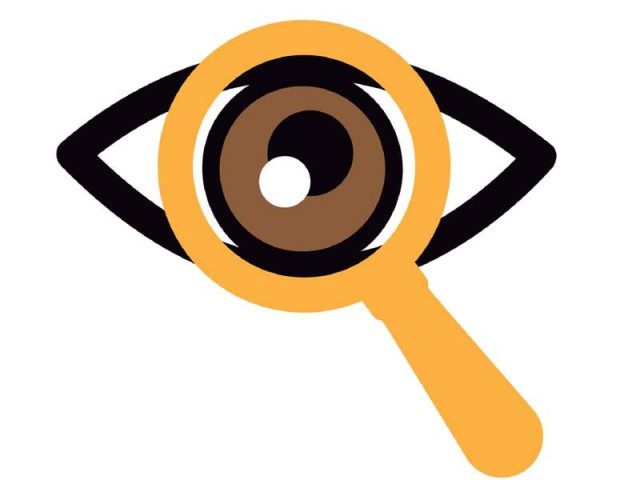Glaucoma: The sneak thief of vision
See why it is important to get your eyesight tested regularly

See
why it is
important
to get your
eyesight tested regularly. DESIGN BY MARYAM RASHID

This increase in pressure in the eye can damage the optic nerve, which is responsible for transmitting images to the brain. If glaucoma goes undiagnosed for a long time, it causes permanent loss of vision within a few years. Although the direct cause of this blockage is still unknown, it is known that it can be inherited. Therefore, doctors advise that if a family member is diagnosed with glaucoma, you should regularly visit an eye doctor for an eye exam. The less common causes of glaucoma include a blunt or chemical injury to the eye, a severe eye infection, a blockage of blood vessels in the eye, inflammatory conditions and occasionally, eye surgery to correct another condition.
Glaucoma is usually known to occur in both eyes, but it may affect each eye to a different extent. There are usually few or no symptoms of glaucoma, but the first sign is often the loss of peripheral or side vision, which can go unnoticed until later in the disease. Increasing pressure in the eye can cause sudden eye pain, headache, blurred vision or the appearance of halos around lights. If you experience any of these symptoms, it is important that you immediately visit an eye specialist.
Making a diagnosis:

“It is very rare that a patient will come to us and tell us that they are experiencing symptoms of glaucoma, as this is a disease often accidentally diagnosed when a patient comes to us complaining about some other eye related issue,” says associate professor Dr Tanveer Chaudhry of Aga Khan University Hospital in Karachi. The disease is diagnosed through a test called Optical Coherence Tomography, a non-invasive imaging test that uses light waves to take cross-section pictures of your retina. A Visual Field Test, which measures how far up, down, left and right the eye sees without moving and how sensitive vision is in different parts of the visual field, is also used to diagnose glaucoma.
Treatment:

There are three different forms of treatment available for the disease, including eye drops, laser surgery and microsurgery. While eye drops reduce the formation of fluid in the front of the eye or increase the outflow, laser surgery slightly increases the outflow of the fluid from the eye or eliminates fluid blockage. Meanwhile, microsurgery — a minimally invasive operation for creating a new channel to drain the eye fluid — reduces the intraocular pressure of the eye. The surgery has an 80% success rate and in some cases, must be redone.
Most people with glaucoma do not go blind if they follow their treatment plan and get regular eye exams. “The most important thing is to increase awareness about the importance of regular eye checkups,” explains Dr Chaudhry. “It is not enough to go to your optician and get your spectacles updated. You need to visit an eye specialist at least once a year.”
Hurmat Majid is a subeditor at The Express Tribune. She tweets @bhandprogramme
Published in The Express Tribune, Sunday Magazine, April 5th, 2015.


















COMMENTS
Comments are moderated and generally will be posted if they are on-topic and not abusive.
For more information, please see our Comments FAQ